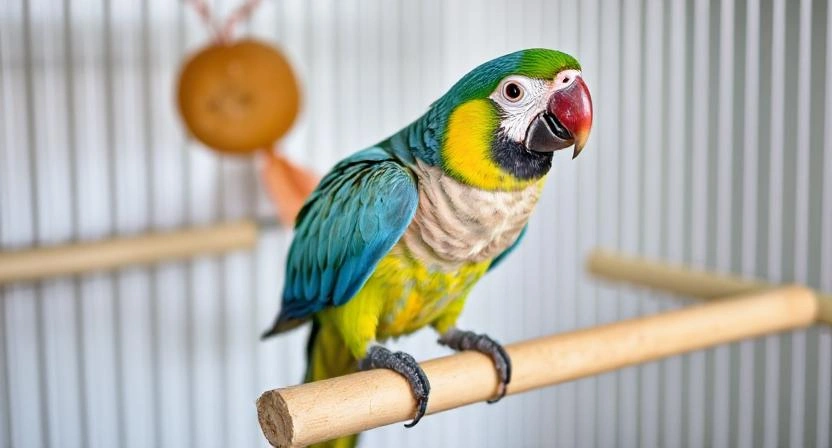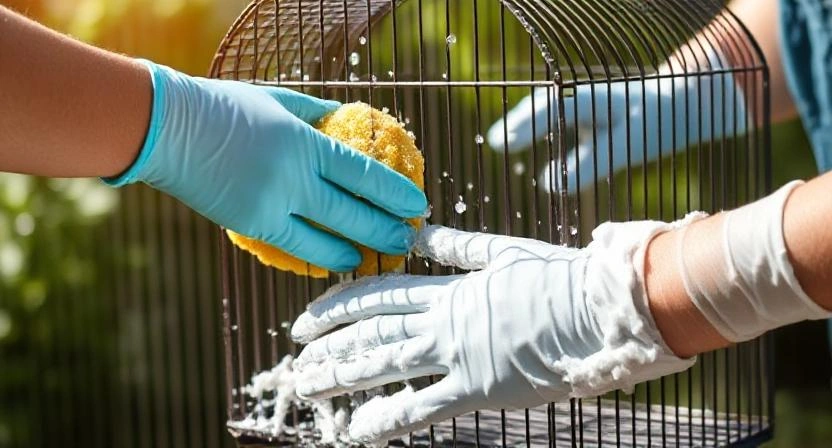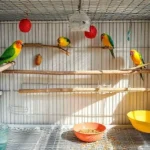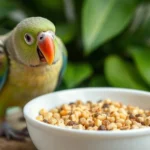A clean bird cage is essential for your pet’s health and happiness. Dirty cages can harbor bacteria, mold, and parasites, leading to respiratory issues and infections. How to Clean a Bird Cage: Regular cleaning ensures a safe environment for your bird while keeping unpleasant odors at bay.
Why Cleaning a Bird Cage is Important?
Birds are sensitive creatures, and a dirty cage can lead to:
A weekly deep clean and daily spot cleaning will keep your bird healthy and your home fresh.
How to Clean a Bird Cage – 7 Simple Steps?
Before starting, collect these bird-safe cleaning tools:
1. Gather Your Cleaning Supplies
- Mild dish soap or bird-safe cage cleaner
- White vinegar or diluted bleach solution (1:10 ratio with water)
- Scrub brush or sponge
- Hot water
- Paper towels or clean cloth
- A small vacuum or dustpan (for debris removal)
-
Gloves (optional)

VEVOR Wrought Iron Bird Cage: Durable & Easy Clean
The VEVOR 54-inch bird cage is built to last with a sturdy wrought iron frame, rolling stand, and convenient slide-out tray for easy cleaning. Ideal for parakeets, cockatiels, lovebirds, and more.
2. Remove Your Bird Safely
- Transfer your bird to a secure, temporary cage or playpen.
- Ensure the area is draft-free and warm to prevent stress.
3. Dispose of Old Bedding & Debris
- Remove all toys, perches, and dishes.
- Discard soiled bedding, feathers, and droppings.
- Use a small vacuum or brush to clear loose debris.
4. Wash the Cage with Soap & Water
- Fill a basin with hot, soapy water.
- Scrub all cage surfaces, including bars, trays, and corners.
- Rinse thoroughly to remove soap residue.
5. Disinfect the Cage (Safely!)
- Use a vinegar solution (50/50 with water) or a diluted bleach rinse (1 part bleach to 10 parts water).
- Avoid harsh chemicals like phenol-based cleaners (toxic to birds).
- Let the disinfectant sit for 10-15 minutes, then rinse well.

NETVUE Birdfy Smart Bird Feeder: AI-Powered
Experience smart birdwatching with the NETVUE Birdfy AI feeder. This blue feeder uses AI to capture and identify birds, provides cloud storage, and lets you watch live.
6. Dry the Cage Completely
- Wipe down with a clean towel or let it air dry.
- Moisture promotes bacteria and rust, so ensure it’s fully dry before reassembling.
7. Reassemble with Clean Accessories
- Wash food bowls, perches, and toys with soapy water.
- Replace old perches if they’re worn or soiled.
- Add fresh bedding (paper liners or bird-safe substrates).
Bird Cage Cleaning Schedule
| Task | Frequency |
|---|---|
| Remove droppings & food debris | Daily |
| Wash food/water bowls | Daily |
| Change cage liner | Every 2-3 days |
| Full cage cleaning | Weekly |
| Deep disinfecting | Monthly |

Frequently Asked Questions (FAQs)
What is the safest disinfectant for bird cages?
White vinegar and diluted bleach (properly rinsed) are safe. Avoid aerosol sprays and phenols.
Can I use Dawn dish soap to clean a bird cage?
Yes, mild dish soap is safe if thoroughly rinsed.
How often should I replace bird perches?
Inspect them monthly—replace if chewed, cracked, or soiled.
Why does my bird cage smell bad even after cleaning?
Check for hidden mold or leftover food. Increase cleaning frequency and ventilation.
Final Thoughts
A clean cage means a happy, healthy bird. By following this routine, you’ll prevent disease and create a safer home for your pet.
Need more bird care tips? Check out our guide on Best Bird Cage Accessories and How to Train Your Bird to Step Up.
Got questions? Drop them in the comments below! 🐦
Squirrel Buster Plus: No Squirrels, More Birds!
Enjoy more birds and no squirrels with the Squirrel Buster Plus bird feeder. It holds 5.1 pounds of seed, has 6 feeding ports, and is designed with a cardinal ring.


